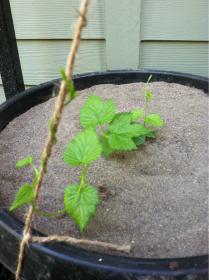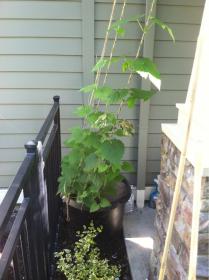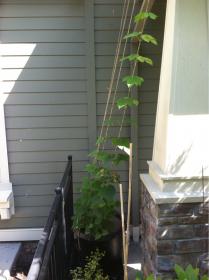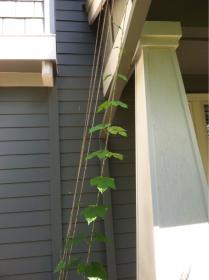I'm assuming you are growing your hops outside - fungus gnats have a tendency to become a nuisance to indoor plants (I bring citrus and other tender plants in for the winter and usually have gnats around the plants). Fungus gnat larvae can be a problem to seedlings indoors, as they can cause root problems, but there are usually enough predator bugs outside to keep gnats under control.
I didn't click on the link since I'm at work and I know what the topic of that forum is, but I don't think you have anything to worry about with your hop plants as long as they look healthy. Drainage is important as you don't want the soil waterlogged. I'd be more worried about that then the gnats - in fact if you let the soil dry out a bit your gnat problem will likely go away.
Edit: MORE INFO
http://www.learn2grow.com/problemsolvers/insectsanimals/insectdamagecontrol/fungusgnats.aspx
How do you control fungus gnats?
They key is prevention, and you can do this two ways: The first is to avoid overwatering your plants. Overwatering, to fungus gnats, is like laying a big steak on the floor in front of a starving dog – they can’t resist it. The second way to prevent the problem is to inspect the soil of a plant before bringing one home. Do you see gnats buzzing around it? If so, that’s not a good sign. Put the plant down and just walk away.











































![Craft A Brew - Safale S-04 Dry Yeast - Fermentis - English Ale Dry Yeast - For English and American Ales and Hard Apple Ciders - Ingredients for Home Brewing - Beer Making Supplies - [1 Pack]](https://m.media-amazon.com/images/I/41fVGNh6JfL._SL500_.jpg)
















